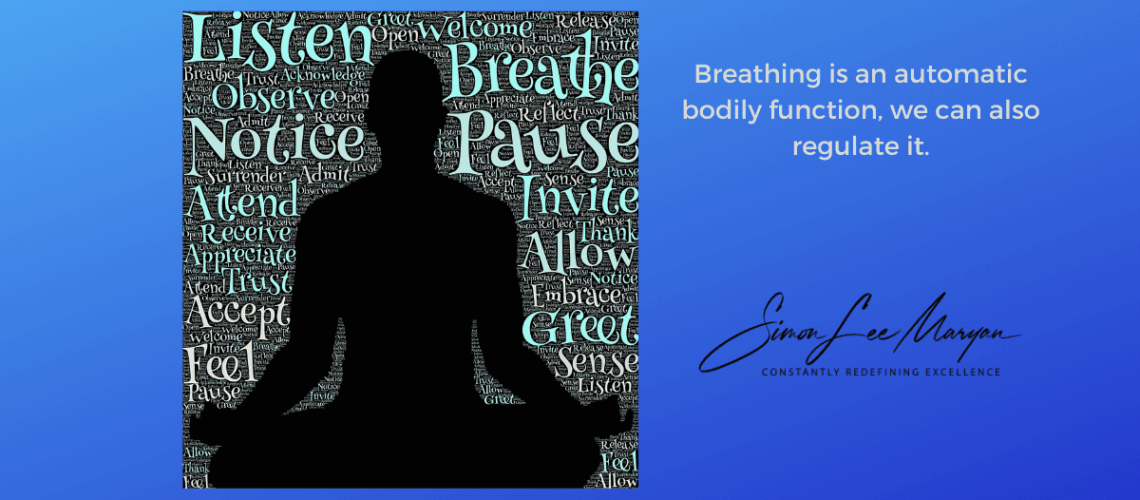Research has shown that purposeful breathing can have positive effects on the nervous and cardiovascular systems, subsequently influencing our physical and mental well-being. By intentionally slowing down our breathing, we can invoke the calming ‘rest and digest’ reaction orchestrated by the parasympathetic nervous system.
Methods such as Inspiratory Muscle Strength Training (IMST) and mindful deep breathing have demonstrated potential in mitigating stress, enhancing mental wellness, and decreasing hypertension.
Main Points:
- Regulated breathing impacts not only our oxygen levels but also influences our heart’s blood output, which has implications for cardiovascular health.
- IMST can offer significant health advantages, including lowering systolic blood pressure.
- Mindful breathing can aid in managing mental health, reducing stress, anxiety, and depressive feelings, and is beneficial for pain management. Reference: Journal of Cardiovascular Health
Breathing is a constant, often unnoticed activity. Yet, focusing on it can lead to improvements in both mental and physical health.
Dr. Daniel Craighead, a research professor at the University of Colorado Boulder, explains that breathing’s implications extend beyond the lungs, influencing the nervous and cardiovascular systems. The amount of air we take in can also affect our heart’s blood output.
Dr. Ni-Cheng Liang, an integrative pulmonologist in California, emphasizes that while breathing occurs naturally, it’s fascinating how we can purposefully adjust our breathing pattern.
Breathing interacts closely with our heart rate, and both are regulated by similar brain parts. Inhalation causes the lungs to expand, impacting the heart and blood vessels, subsequently influencing our breathing intensity.
In stressful situations, our “fight or flight” response is activated, leading to heightened heart rates and quicker breathing – a function of the sympathetic nervous system. On the other hand, when relaxed, our breathing becomes slower, prompting the parasympathetic nervous system to take charge.
Breathing can be influenced by these systems, but through mindful breathing, we can guide them. Studies indicate that controlled breathing can invoke the calming response by activating the vagus nerve, which oversees many involuntary functions like heart rate.
Dr. Craighead conducted research emphasising how targeted breathing exercises can impact health metrics, specifically blood pressure. His study on IMST showcased its effectiveness in lowering blood pressure in healthy adults.
Moreover, there are other benefits of deep breathing. It can balance blood sugar levels in healthy individuals and fortify mental health by alleviating stress, anxiety, and depression. Controlled breathing techniques are also valuable for pain management.
However, Dr. Liang mentions certain limitations. For instance, while deep breathing can provide some relief, it might not be effective for acute pain resulting from severe injuries or specific lung conditions. Mindful breathing can help manage symptoms of psychological disorders but isn’t a cure.
Dr. Craighead emphasizes that while breathing exercises have benefits, they shouldn’t replace conventional aerobic exercises. Dr. Liang suggests various controlled breathing methods rooted in pranayama traditions, like 4-7-8 breathing, pursed-lip breathing, box breathing, and diaphragmatic breathing.
4-7-8 breathing
Inhale through your nose for four counts, hold for seven counts, and exhale through your mouth for eight. “This can be used by anyone who doesn’t have chronic lung disease in circumstances of heightened stress, anxiety, or where you feel like you’re not able to wind down at the end of your day or have some trouble falling asleep,” Liang said. Making the exhale longer than the inhale helps to activate the vagus nerve and bring on the parasympathetic nervous system, she said.
Pursed-lip breathing
Inhale, then exhale through your mouth through pursed lips, as if you’re blowing out birthday candles, two to four times longer than your inhale. This works for anyone who has trouble holding their breath, such as people with chronic lung disease. Pursing your lips creates pressure that opens the airways a bit, Liang said, and the long exhale helps get rid of unexchanged gas in the lungs and makes room for more fresh air.
Box breathing
Inhale through the nose for four counts, hold your breath for four more, exhale for four, then hold for four. “When you breath-hold, that increases your carbon dioxide level temporarily. And when you increase your carbon dioxide level in your bloodstream, that decreases your heart rate. And so it helps to bring on that parasympathetic physiology online as well.” Liang recommends box breathing for people who “need to remain focused and alert, yet calm at the same time. For instance, before taking a big test or before speaking to a large audience.”
Diaphragmatic breathing
Place both hands on your abdomen, inhale through the nose, letting the abdomen balloon out, and exhale through your mouth. Liang said that the focus on the abdomen and hands makes this approach helpful for people who get anxious if they have to focus too much on their airflow.
Still, those with underlying medical conditions should consult healthcare professionals before trying these techniques. As beginners might feel dizzy after trying out these exercises, Dr. Liang recommends starting slow.
The human body and its interconnected systems are truly remarkable, and the science of breath underscores this fact.
What Next?
To learn simple, powerful and highly effective emotional self-regulation techniques based around various breathwork exercises, get in touch by email hello@simonmaryan.com or use the contact form in the navigation bar.
Read a previous blog post about Embracing Resilience: https://simonmaryan.com/embracing-resilience-a-journey-through-time/
My evidence based emotional and psychological resilience and coaching programs provide a three tiered approach for organisations to utilise a plug and play system that fits with, and enhances current mental wellbeing policies and programs. It targets all levels of the organisation and generates mutual support for all levels.
My flagship course, The SLM Process (Somato-Limbic Metacognitive Process) is offered in two formats, you can review the content of the full course via this link https://simon-maryan.thinkific.com/courses/somato-limbic-metacognitive-slm-process
And you can take a look at all my courses by clicking on this link: https://simon-maryan.thinkific.com/collections
To discuss how our programs can benefit your organisation email us at hello@simonmaryan.com and either myself or one of my team will be in touch to arrange a call or face to face meeting with you.

